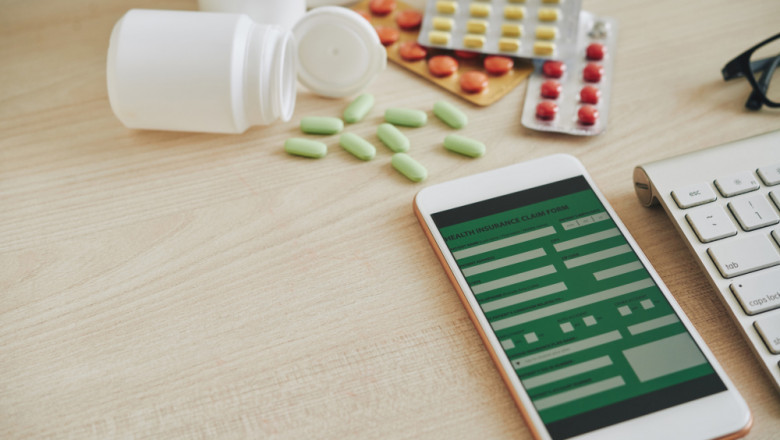views
Addiction is a complex disease that affects the brain and behavior, making it difficult to overcome through willpower alone. Fortunately, advances in medical science have paved the way for more effective treatment options—one of which is Medication-Assisted Treatment (MAT).
Although widely used in many countries, MAT is still surrounded by myths and misunderstandings, especially in parts of India. This blog post aims to clearly explain what MAT is, how it works, and why it is considered a safe and evidence-based approach to treating substance use disorders.
What is Medication-Assisted Treatment (MAT)?
Medication-Assisted Treatment (MAT) is a comprehensive approach that combines FDA-approved medications with counseling and behavioral therapies to treat substance use disorders, especially opioid, alcohol, and tobacco addiction. The goal is not only to help individuals detox but also to support long-term recovery by stabilizing brain chemistry and reducing cravings.
Contrary to common misconceptions, MAT does not simply replace one drug with another. Instead, it helps manage withdrawal symptoms, prevent relapse, and restore normal brain function—making it easier for people to focus on rebuilding their lives.
Conditions Commonly Treated with MAT
MAT is primarily used to treat the following substance use disorders:
-
Opioid Use Disorder (OUD) – Including heroin and prescription painkillers.
-
Alcohol Use Disorder (AUD) – Excessive or uncontrolled alcohol consumption.
-
Nicotine Dependence – Often treated with medications like nicotine replacement therapy or non-nicotine prescriptions.
Each type of addiction has specific medications that help manage physical and psychological symptoms, which we will explore in detail.
Medications Used in MAT
Here’s a look at some of the most commonly used MAT medications:
1. For Opioid Addiction
-
Methadone: A long-acting opioid agonist that reduces withdrawal symptoms and cravings without causing euphoria.
-
Buprenorphine: A partial opioid agonist that helps reduce withdrawal symptoms with a lower risk of misuse.
-
Naltrexone: An opioid antagonist that blocks the euphoric effects of opioids, helping prevent relapse.
2. For Alcohol Addiction
-
Disulfiram: Causes unpleasant effects when alcohol is consumed, serving as a deterrent.
-
Naltrexone: Reduces alcohol cravings and diminishes its pleasurable effects.
-
Acamprosate: Helps restore the chemical balance in the brain disrupted by alcohol.
3. For Nicotine Addiction
-
Nicotine Replacement Therapies (NRTs): Include patches, gums, and lozenges.
-
Bupropion and Varenicline: Non-nicotine medications that reduce cravings and withdrawal symptoms.
Each medication is selected based on the individual's health status, type of substance dependency, and recovery goals.
Benefits of MAT
Many healthcare professionals and treatment centers advocate for MAT because of its proven benefits:
1. Reduces the Risk of Relapse
By controlling withdrawal symptoms and cravings, MAT allows patients to stay focused on therapy and long-term healing.
2. Improves Retention in Treatment
People receiving MAT are more likely to stay in rehabilitation programs, which increases their chances of long-term recovery.
3. Decreases Opioid Use
Studies have shown that MAT can significantly reduce illicit opioid use compared to non-medication treatments.
4. Prevents Overdose
Medications like naltrexone and buprenorphine can lower the risk of fatal overdoses, especially in people at high risk of relapse.
5. Supports Holistic Recovery
When combined with behavioral therapies and lifestyle changes, MAT addresses both the physical and psychological aspects of addiction.
Addressing Common Myths About MAT
Despite its effectiveness, MAT faces stigma and skepticism, especially in traditional communities. Let’s debunk a few common myths:
-
Myth 1: MAT just replaces one addiction with another.
Fact: MAT medications are carefully monitored and do not produce the same euphoric effects as illicit drugs. -
Myth 2: MAT is only for short-term use.
Fact: MAT can be safely used long-term under medical supervision, just like medications for chronic conditions such as diabetes or hypertension. -
Myth 3: People using MAT are not truly sober.
Fact: Recovery is about regaining health and functionality, and MAT helps achieve that by supporting physical and mental well-being.
MAT in India: Growing Yet Underutilized
While MAT is gaining acceptance in India, it is still underused due to limited awareness, lack of trained professionals, and stigma associated with addiction medication.
However, government health agencies and private rehabilitation centers are beginning to recognize its value. MAT is now part of several de-addiction initiatives, particularly in states heavily affected by opioid misuse.
Integrating MAT with Counseling and Support
MAT is most effective when combined with other treatment modalities. These include:
-
Cognitive Behavioral Therapy (CBT) – Helps identify and change negative thinking patterns.
-
Group Counseling – Offers peer support and shared learning.
-
Family Therapy – Involves family members in the healing process to rebuild relationships.
-
Mindfulness and Stress Management – Techniques like yoga, meditation, and breathing exercises enhance emotional regulation.
A well-rounded program integrates MAT with psychological support and lifestyle interventions for a holistic recovery journey.
Is MAT Right for You or a Loved One?
MAT is not a one-size-fits-all approach. It works best when tailored to an individual's medical history, addiction severity, and recovery goals. A qualified addiction specialist can evaluate the need for MAT and recommend the most suitable treatment plan.
If you or someone you care about is struggling with addiction, seeking professional help is the first step toward recovery.
Final Thoughts: Bridging Science and Compassion
More than just a medical intervention, MAT is a doorway to hope, healing, and renewed purpose. It enables individuals to regain control of their lives while addressing the deep-rooted causes of addiction.
If you’re looking for a supportive environment that understands the value of both medical and natural healing methods, consider reaching out to Nasha Mukti Kendra in Mohali. Our center integrates MAT with holistic therapies, behavioral support, and compassionate care to help individuals recover the Natural way.














Comments
0 comment